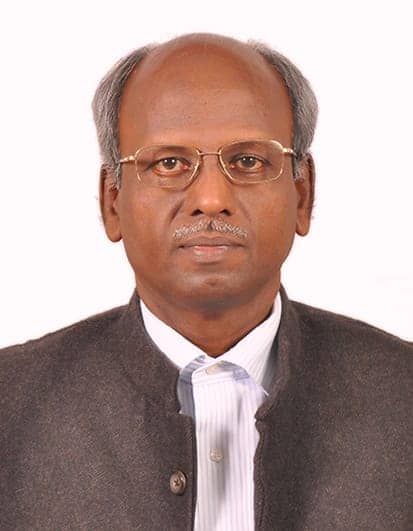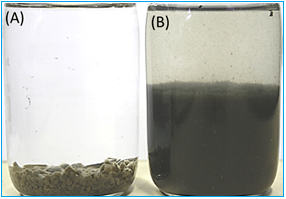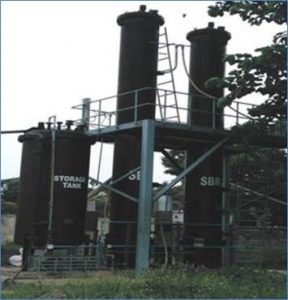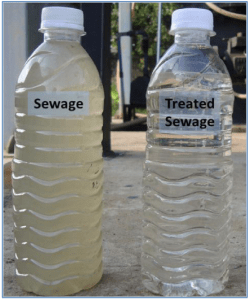We often hear about encroachments and solid waste sounding the death knell for water bodies in Chennai. Villivakkam Lake is no exception; it shares the same plight as any other water body in the city. However, it is set to change. Corporation officials say that the transformation of this 36.5 acre lake will be revolutionary — replete with state-of-the art recreation facilities such as walkway, gym, children’s play area, library, food and play courts, open air theatre and a multipurpose lawn.
Greater Chennai Corporation will adopt Bhabha Atomic Research Centre (BARC)’s natural process of treating wastewater and use it for the lake restoration project under Chennai Smart City Mission. Once that is accomplished, Villivakkam Lake will be the first ever Indian lake to have been brought back to life through recycled wastewater – the water which normally floods the streets of Chennai or pollutes the Bay of Bengal.
In this exclusive interview, BARC Senior Scientist J. Daniel Chellappa explains the low cost, Hybrid Granular SBR (Sequencing Batch Reactor) technology to treat the natural wastewater and explains why this path-breaking technology could well be the future of wastewater treatment.
Why is waste water treatment important?
Untreated or partially treated domestic sewage or industrial effluent pollutes water bodies and contaminates the groundwater in the vicinity, thus wreaking havoc among aquatic life. So scientists are working on establishing methodologies on how best the grey and black water can be recycled and used to recharge groundwater, especially in water-stressed cities such as Chennai.
In simple terms, what would be BARC’s contribution to the Villivakkam lake restoration project?
BARC is the technology provider for the project and and will not be involved in funding or any construction or commercial activities under the project. I am glad that the Chennai Corporation has decided to revive the lake and ensure flourishing aquatic life in its waters throughout the year. The problem, however, is that during summer the lake goes bone dry. In this regard, the Corporation has approached BARC for technological support.
We can try replenishing it in such a way that the lake is water surplus. As there is no river in the vicinity from which to divert water, treated wastewater can be used to maintain the lake at full storage capacity, supporting flora-fauna sustainability round the year. This water can be also used to recharge the lake-bed and raise the ground water table in the area.
The Chennai Corporation proposes to pilot our technology to treat the wastewater that comes to the nearby sewage pumping station and use it for compensating the loss of lake water that takes place due to evaporation and ground percolation.
Tell us a bit more about about the innovative technology that you will use to treat the waste water.
Hybrid Granular SBR Wastewater Treatment Technology scores over the conventional methods in terms of plant land footprint and cost. It makes use of the natural microbes present in the wastewater for removing contaminants. In this process, microbial growth is predominantly in bio-beads comprised of biomass particles (biofilms and granules). Bio-beads achieve high biomass levels, simplify separation of biomass from treated wastewater and decrease the load of pollutants to acceptable levels.
Bio-beads produced during wastewater treatment are a source of organic carbon, nitrogen and phosphorus. Organic matter and reactive nitrogen contaminants are converted into harmless gaseous products. After suitable treatment, excess microbial sludge (also referred to as sewage sludge or bio-solids) harvested in the process can be used as chemical fertilizer-supplement to benefit organic farming. No chemical addition is needed for nutrient removal.
The recovered treated water is suitable for many reuse applications, and it can also relieve water supply demand in stressed cities or neighbourhoods to some extent. The value of the resources recovered from wastewater treatment plants, that is the treated wastewater and fertilizer-substitute, can partly recover the operation cost of the plant.
Isn’t the sewage in the waste water poisonous?
Sewage water has high levels of Biological Oxygen Demand (BOD) and Chemical Oxygen Demand (COD). Aquatic life cannot thrive in waters with intense BOD and COD. Bio-beads remove the organic matter (COD/BOD), reactive nitrogen (ammonium, nitrate, nitrite) and phosphorous from grey as well as black water, and drastically bring down their values to well below the prescribed acceptable limits (< 10 mg/l), after treatment. This water is now good for aquatic life.
Unlike in certain countries, we do not have separate pipelines for grey water (bath/kitchen wastewater) and black water (sewage). Even so, in the huge volumes of sewage that come to the pumping station, less than 2 percent is solid sewage (sludge). Thus once appropriately treated, sewage turns into a major source of precious water that has wide-ranging reuse applications for water body restoration, ground-water harvesting, building construction activities, gardening, horticulture, irrigation, industrial processing etc. Why waste the ‘waste’ water when it could be recycled and reused ?
So using the recycled wastewater for Villivakkam Lake is a win-win situation?
Absolutely. It addresses two critical problems — of wastewater pollution and water conservation. One, the lake gets replenished and so groundwater levels will increase in the surrounding areas. Secondly, the recycled water from the existing sewage pumping station which generally stagnates on our streets and eventually gets discharged into the Bay of Bengal is put to use for a more fruitful purpose.
What is the quantity of recycled water needed to replenish Villivakkam lake ?
Chennai Corporation has indicated that the lake loses upto 5 Million Litres a Day (MLD) due to groundwater percolation and surface evaporation. So the design concept may involve multiple units of Hybrid Granular SBR adding up to 5-MLD capacity or a single module. A detailed feasibility study would be needed to comment on the exact amount.
How will the rest of Chennai benefit from the new water purification technology?
Take Old Mahabalipuram Road (OMR) for example. It is said that it has world class facilities but there is no underground sewerage system. Whenever the septic tanks get filled, lorries clear them and often dump the collected sewage in or around water bodies. Apartment dwellers can use the technology to treat waste water, and use the recycled water for gardening and flushing, or can earn revenue by supplying the treated water to nearby industries or IT companies for various uses or to builders for construction activities, thus supporting water conservation.
In a way, all multi-storied apartments, gated communities, malls, commercial and office complexes, hotels etc within the city, can adopt this eco-friendly technology and be trend-setters in lowering the load on CMWSSB’s sewage pumping stations.
Corporates and PSUs can use this to promote water conservation and improve the environment and truly fulfill their Corporate Social Responsibility (CSR) Mandate. Hybrid Granular SBR Technology can be adopted even for projects under Smart City, Swachh Bharat, AMRUT and other such missions.
Any other collaborations with Chennai Corporation on the cards?
Greater Chennai Corporation has also requested for BARC’s technical guidance and support for its efforts in restoring the 6-km Mambalam canal. That would be a more challenging mission, as it has multiple inlets of various pollutants and we need to study its complexity.
How far has the Villivakkam lake restoration project progressed?
Greater Chennai Corporation (GCC) has informed us that they will organize water analysis of Villivakkam Lake and pass on the test reports to BARC. Domain scientists will examine the technical feasibility of GCC’s preliminary proposals, upon approval by the Competent Authority of BARC.




Good initiation even adayar river to be cleaned and go for clean and green environment for pedestrian walks n beautiful landscape
We would like to understand feasibility of this method for a small apartment group @ Kovur, Chennai. Let us know whom to contact.
Hi. Can you please share the contact details for getting more technical information about the process. Would also like to know the capital cost and operating and maintaining cost of such plants for housing communities
Please mail him at danielchellappaj@gmail.com
Everything about this BARC technology is fine provided the treated sewage is discharged into flowing river waters, but it is dangerous to discharge into public reservoirs of static water bodies because the treated sewage is not free of water borne faecal organisms of origin from humans suffering from cholera, typhoid, jaundice etc.